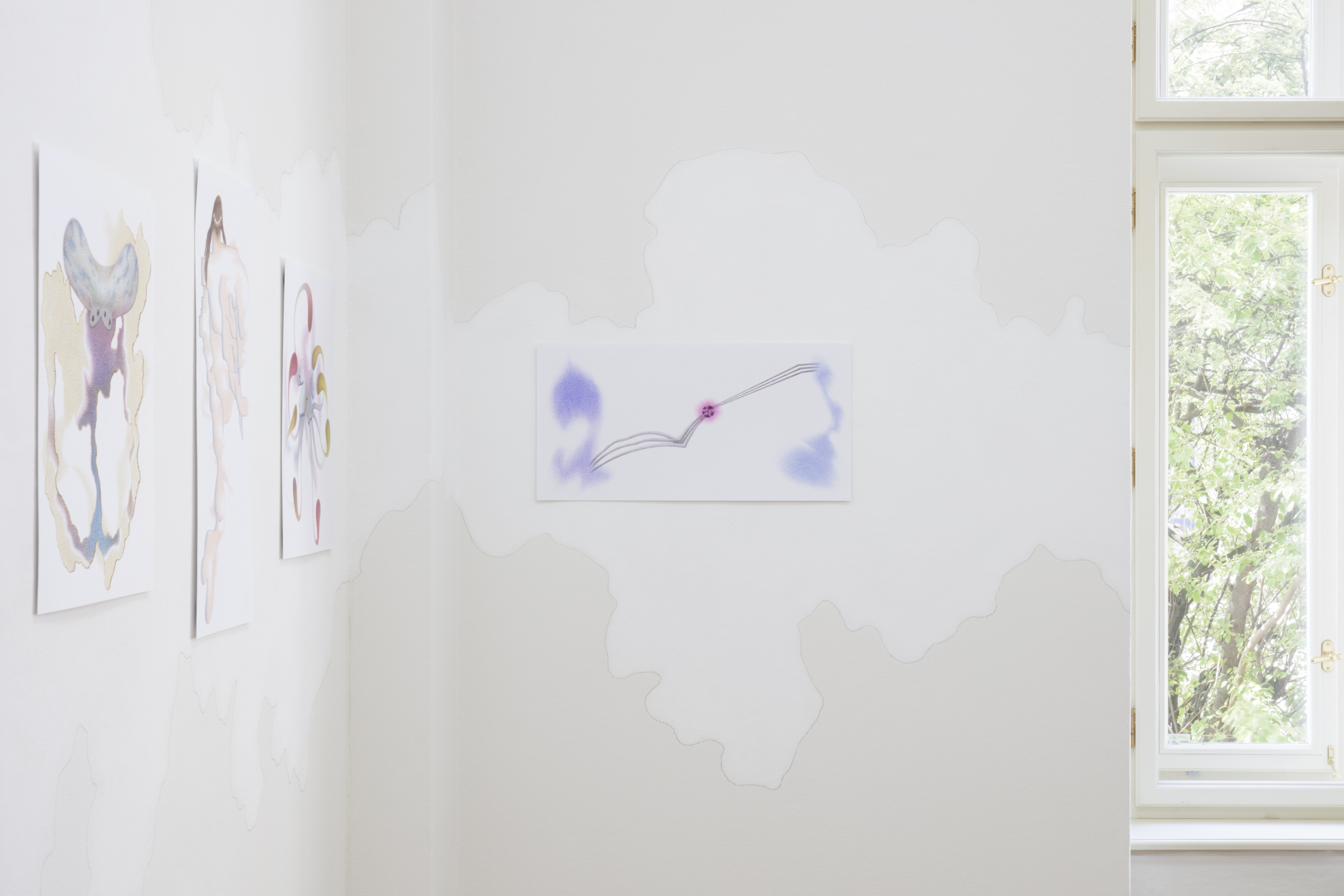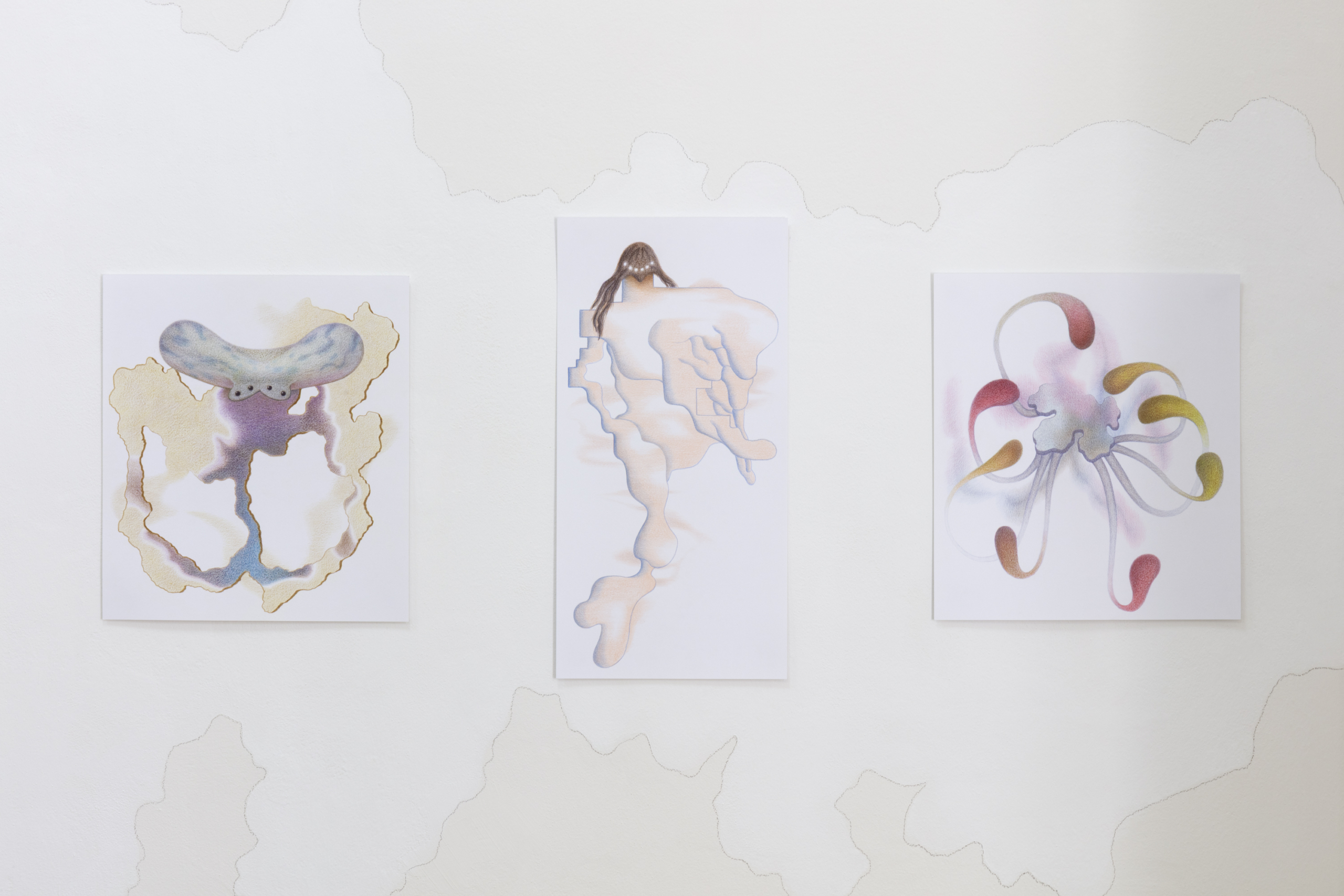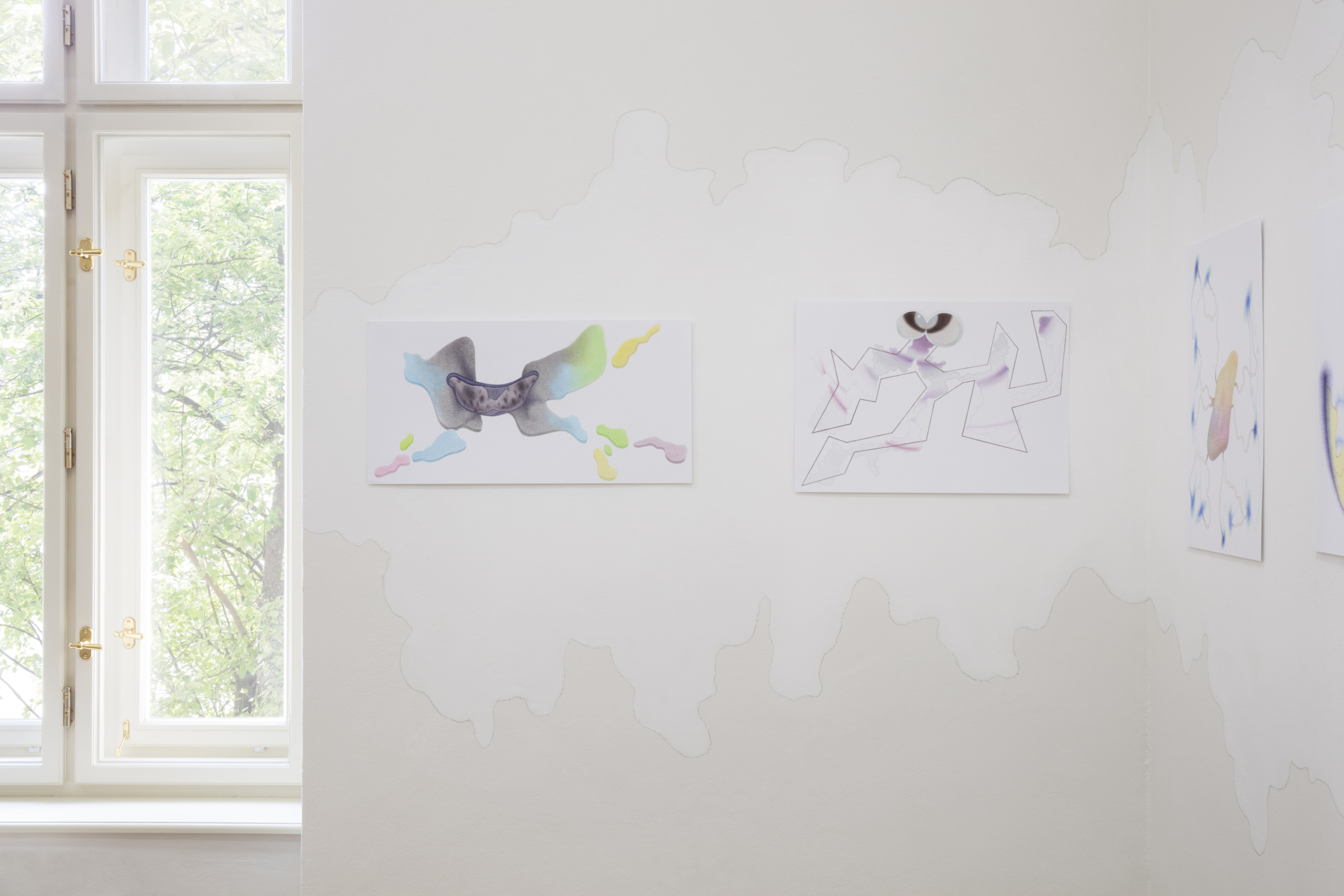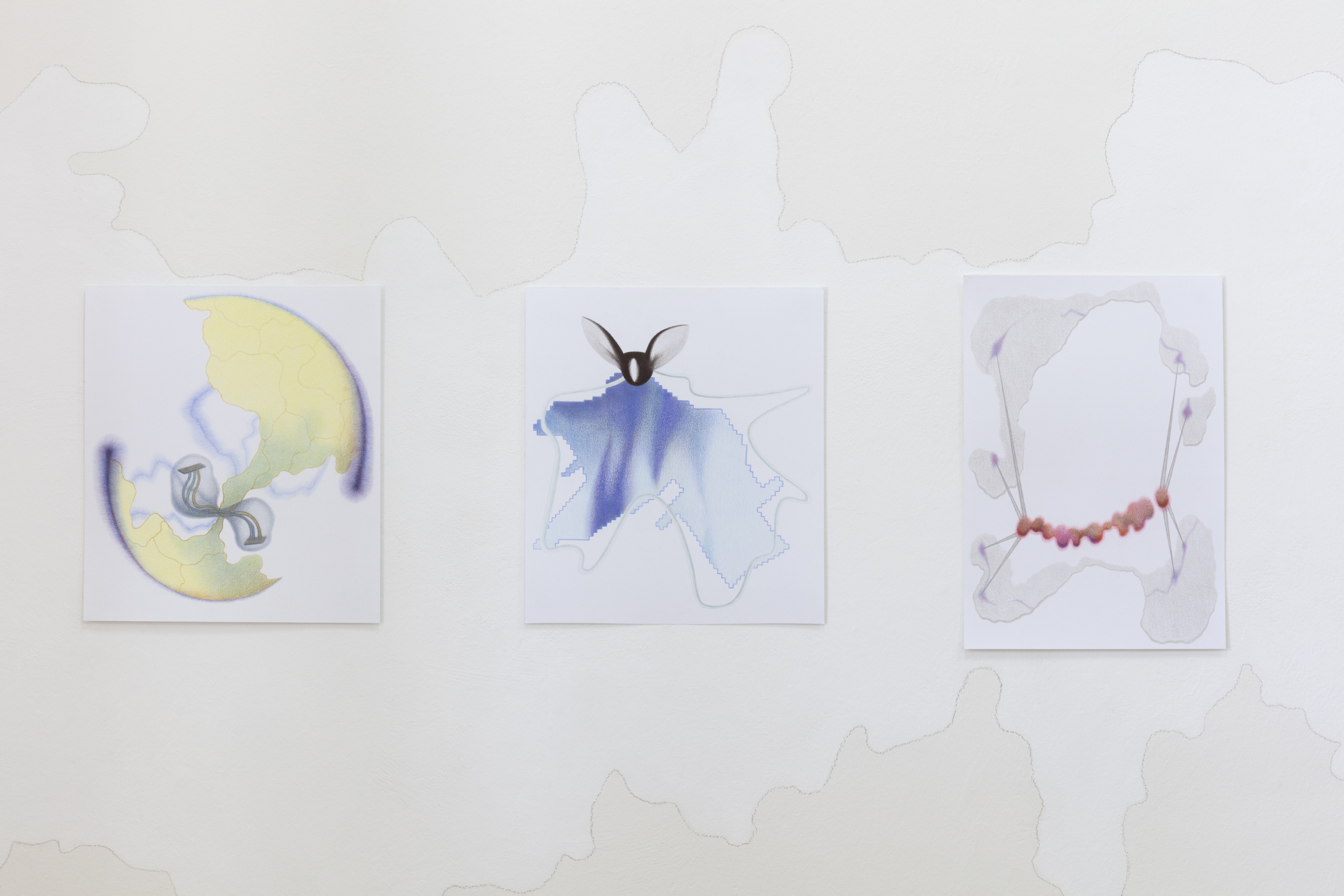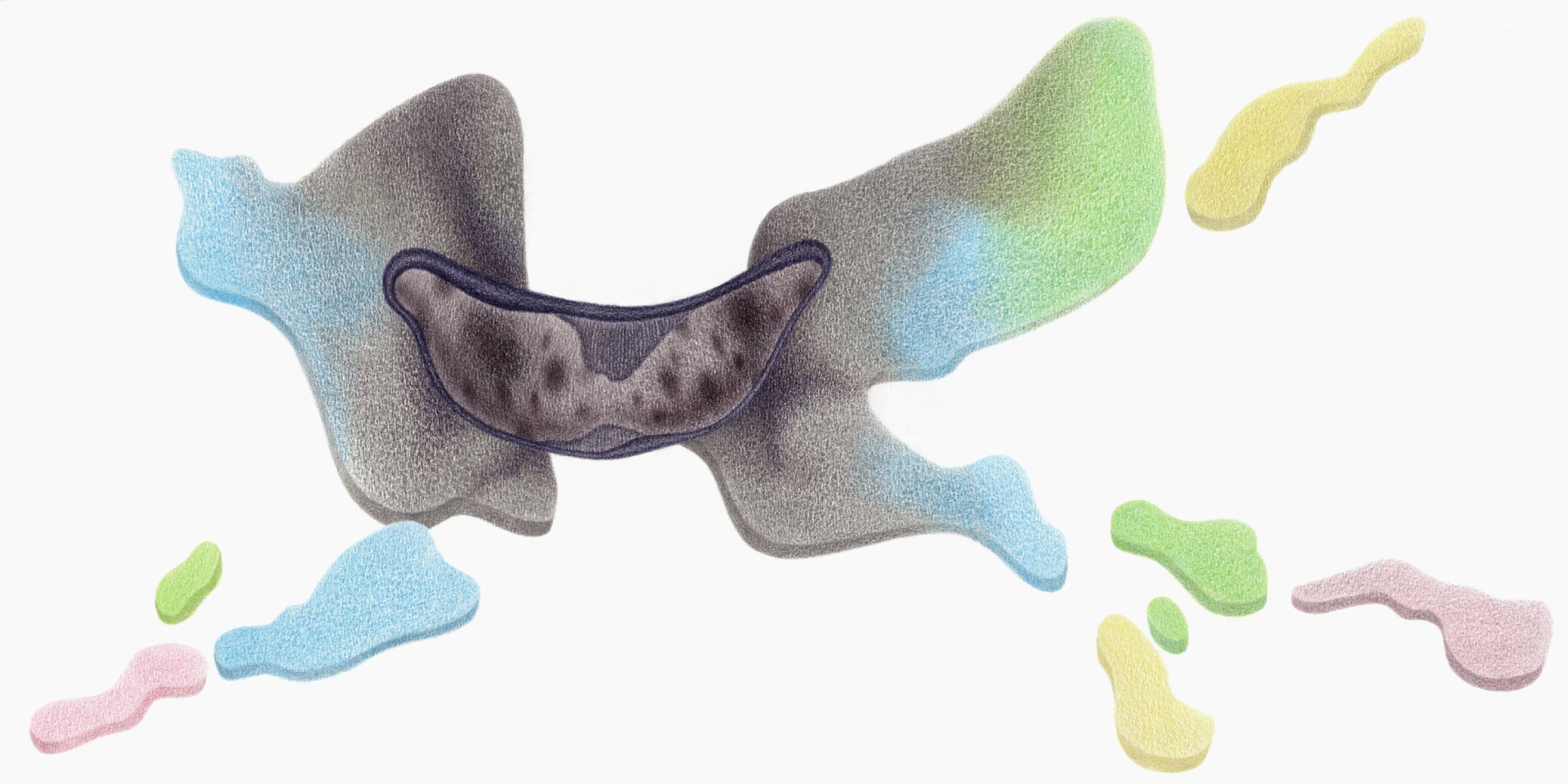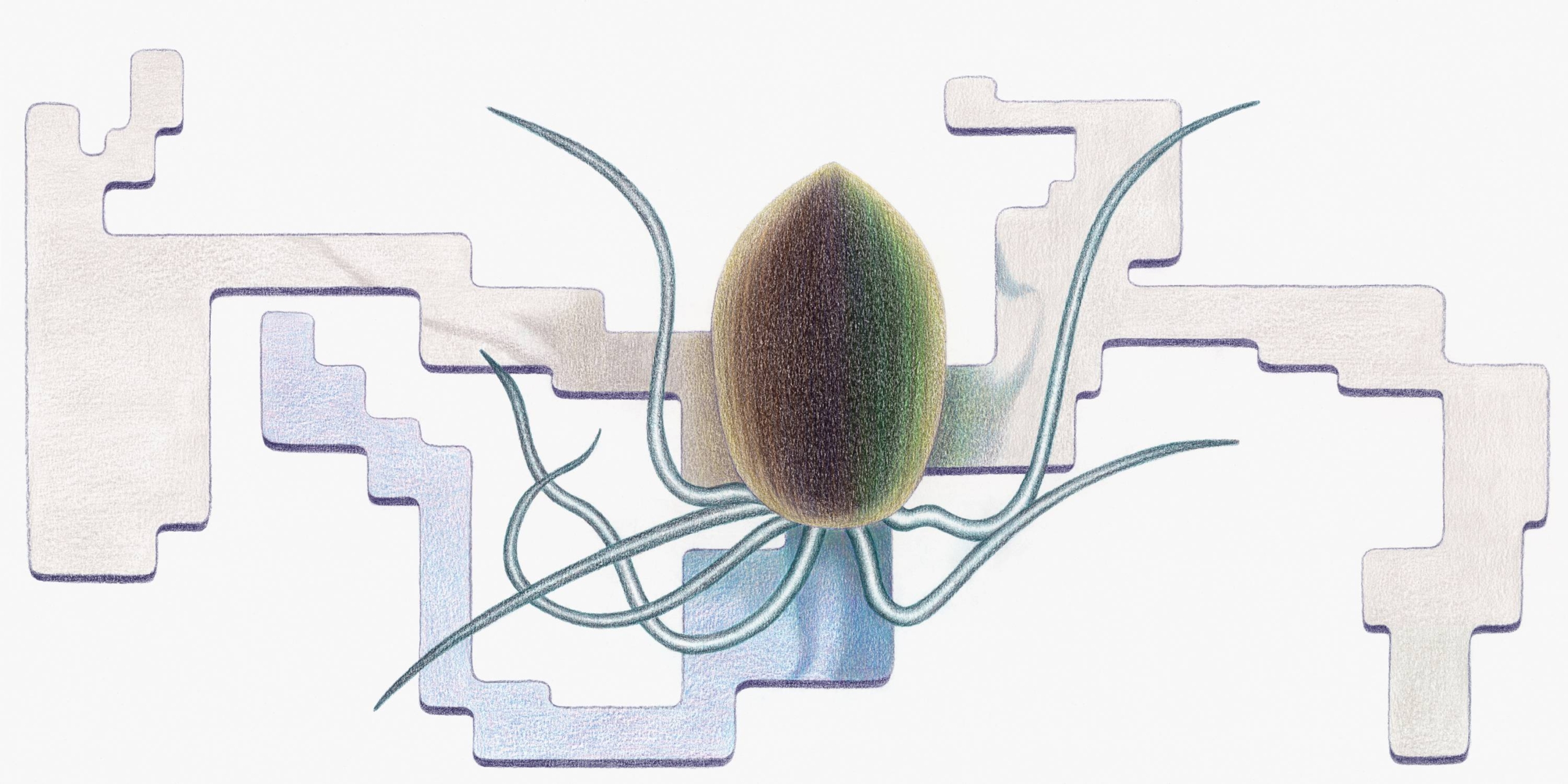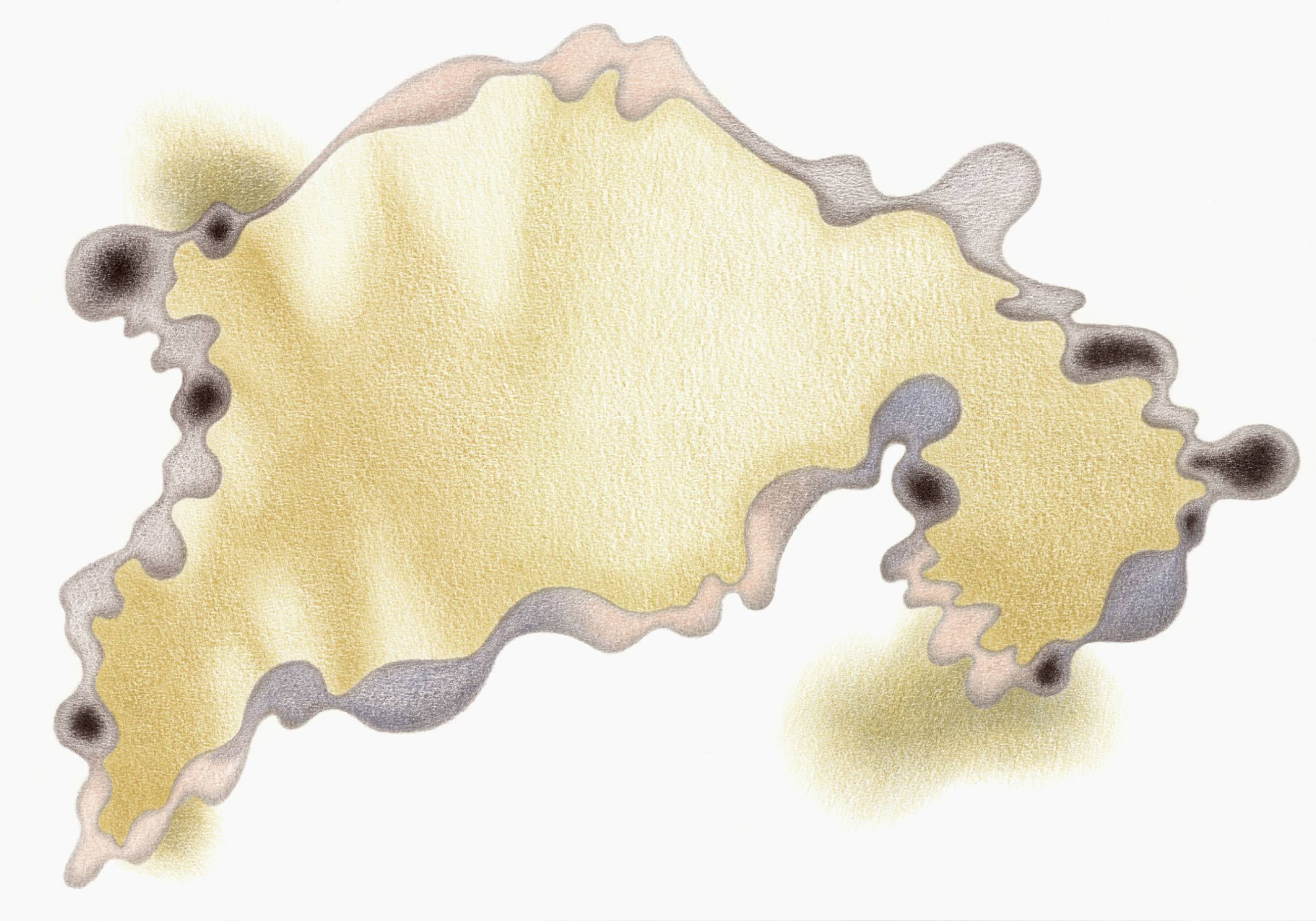Argišt Alaverdyan / Life Interface
10/04/2025-10/06/2025
In his latest works Life Interface, Argišt Alaverdyan explores the ambiguous boundaries between various entities. The newly created depictions can take the form of plants, animals, robots, or abstract concepts such as maps or other records of the state and shape of the world. Viewed through Alaverdyan’s artistic lens, a distinctive fictional world emerges that is difficult to interpret through ordinary frames of knowledge. To understand it sufficiently as an observer, one must abandon an anthropocentric perspective and remain open to alternatives to our established understanding of concepts like nature and civilization.
The title Life Interface suggests that Alaverdyan is attempting to define a new way of life for which we are seeking guidelines and methods of interpretation. This new life is no longer suitable to be judged solely through a human perspective but rather through the prism of new technologies and interfaces that dictate the interaction between humans and machines. We should ask ourselves what our relationship to these technologies will be and how they will affect our understanding of our own identity and existence. The author does not present a definitive way of interpreting his work, but individual drawings reveal techno-skeptical references—for instance, the motif of the extractivist principle in the use of resources. However, the artistic rendering, which intuitively feels pleasant and employs a color palette that is at times even cheerful, contributes to the uncertainty of one-sided interpretations. Alaverdyan’s work primarily seeks to open a path to these deeper questions and provides inspiration for reflections on what it means to be human in an era where the boundaries between human and machine are increasingly blurred, where virtual identity may hold greater value for many members of society than their everyday physical existence, and where debates about the future alongside ever-advancing forms of artificial existence fill public spaces. His project, comprising a nearly year-long series of 28 drawings, thus builds a bridge between art, technology, and posthumanist philosophy.
Alaverdyan does not attribute solely optical value to visual art. He incorporates his extensive interest in the principles of various games into his compositions and perception of space. For instance, the pattern of chess moves on a chessboard can be perceived as a shape or figure laid out over time. Applied to classical drawing, this approach requires us to rethink the usual perspective on a two-dimensional image and view the static format of drawing as a kind of moving image frozen in time. What can we observe in the author’s drawings because of this?
Veronika Čechová
10/04/2025-10/06/2025
Opening
10/04/2025, 6-9 pm
Meet the Artist
19/06/2025, 6 pm

